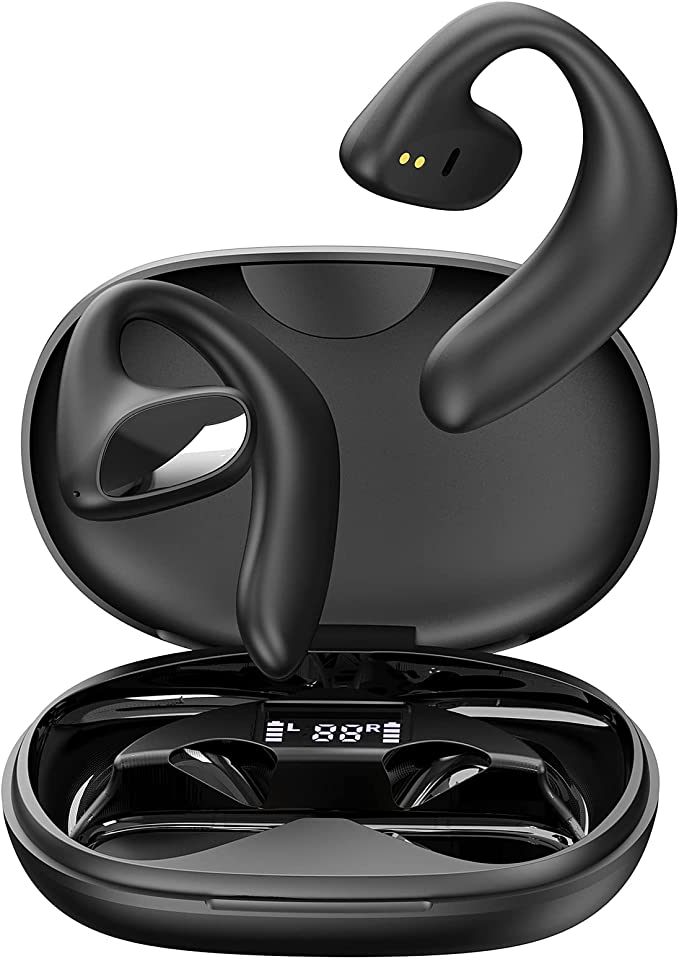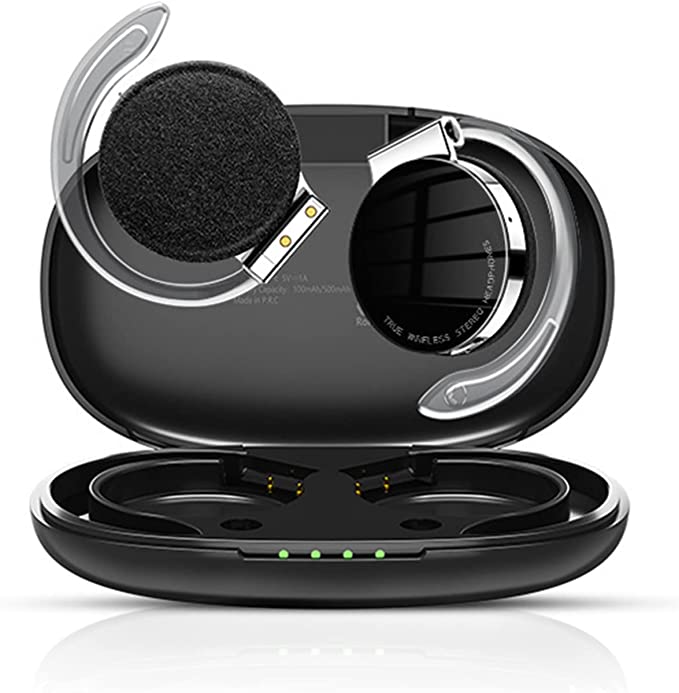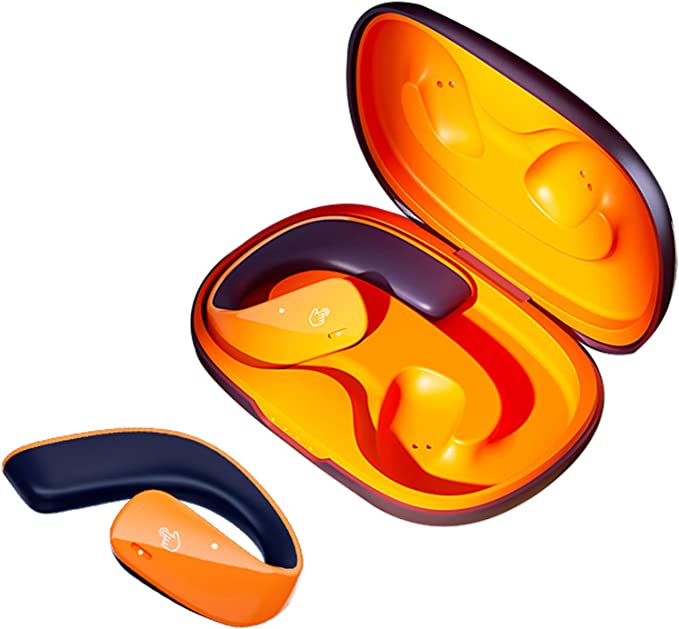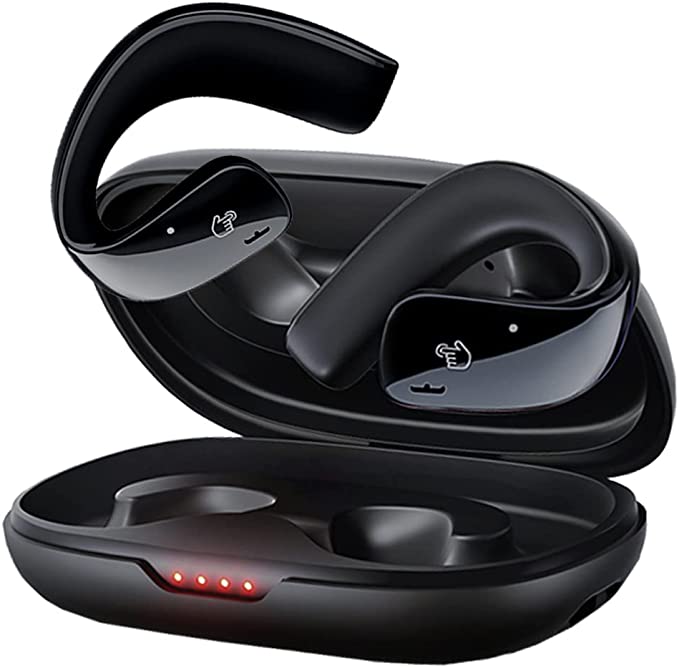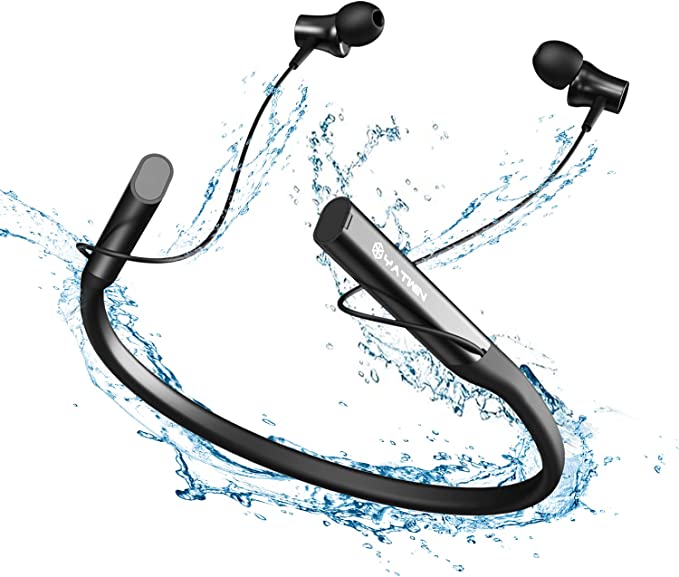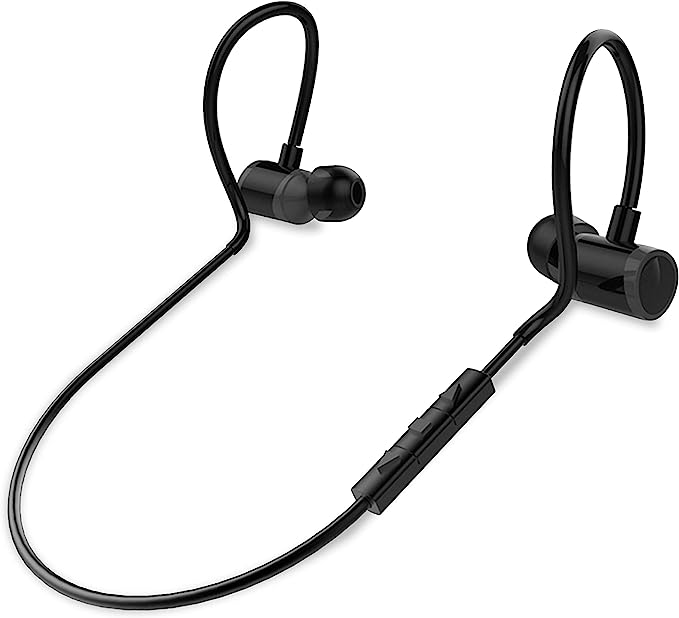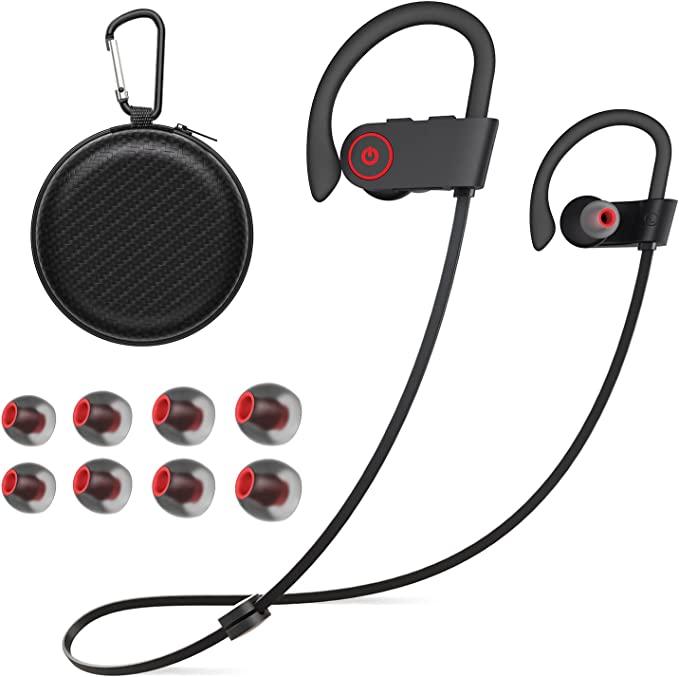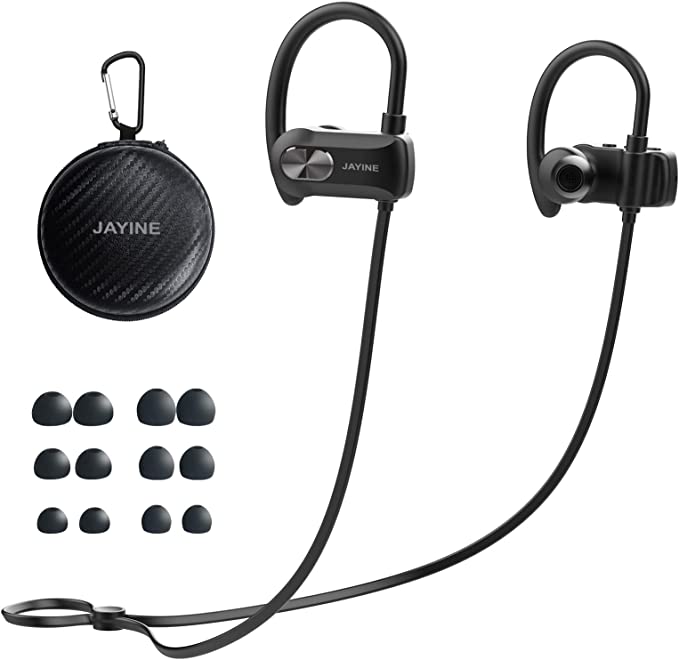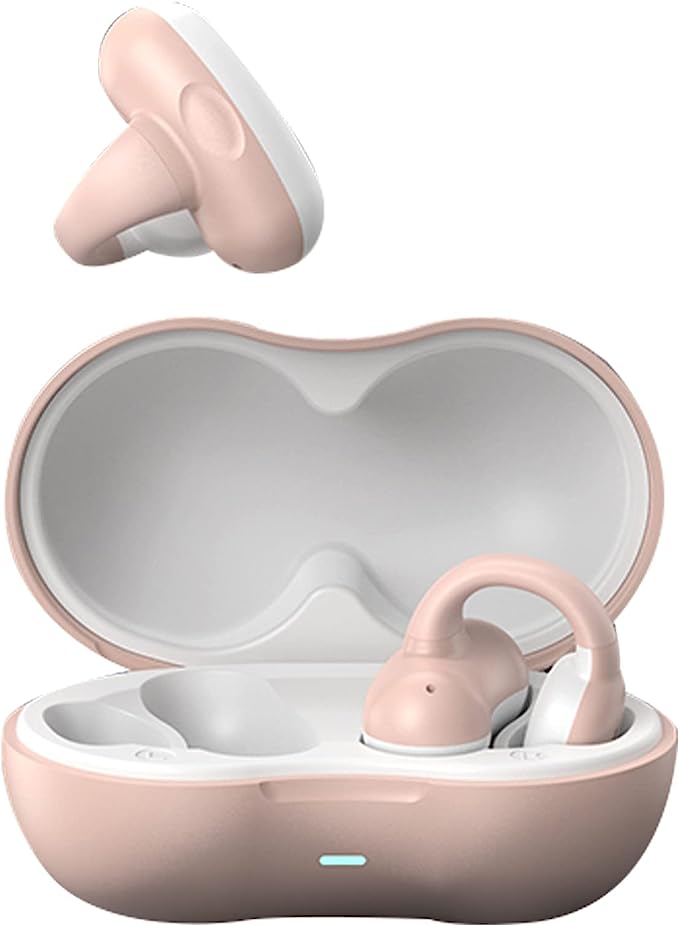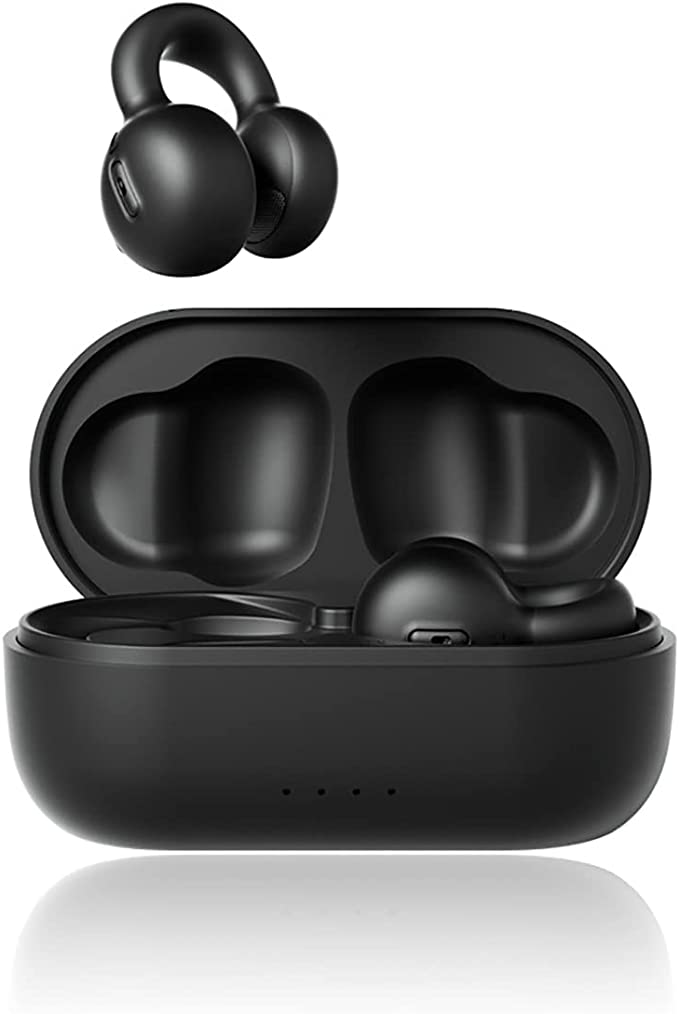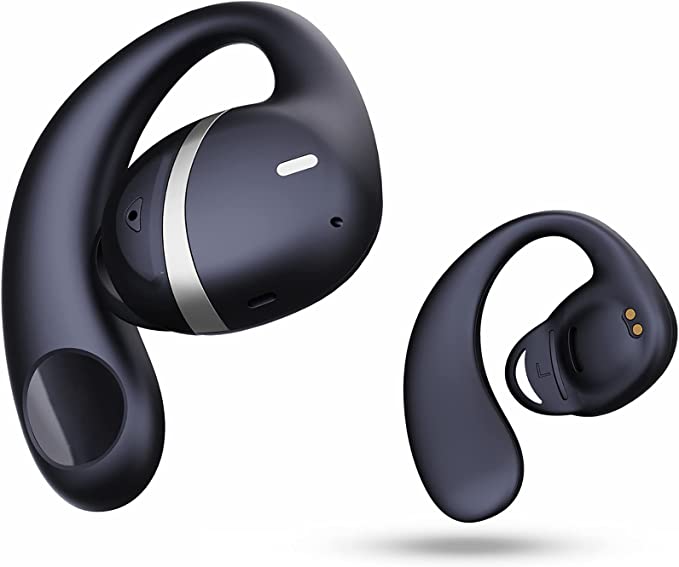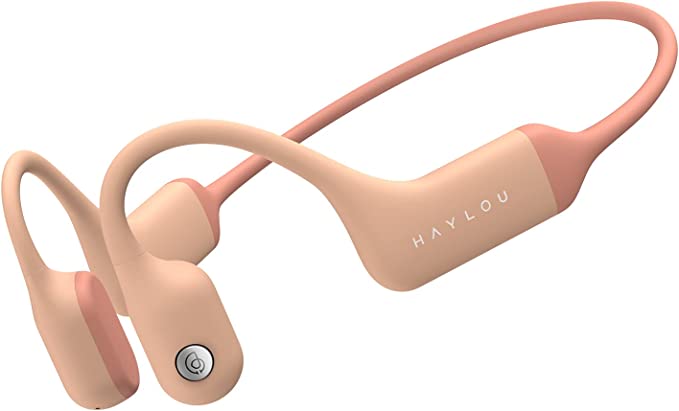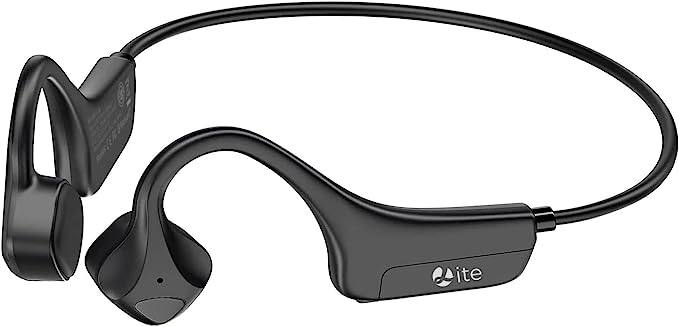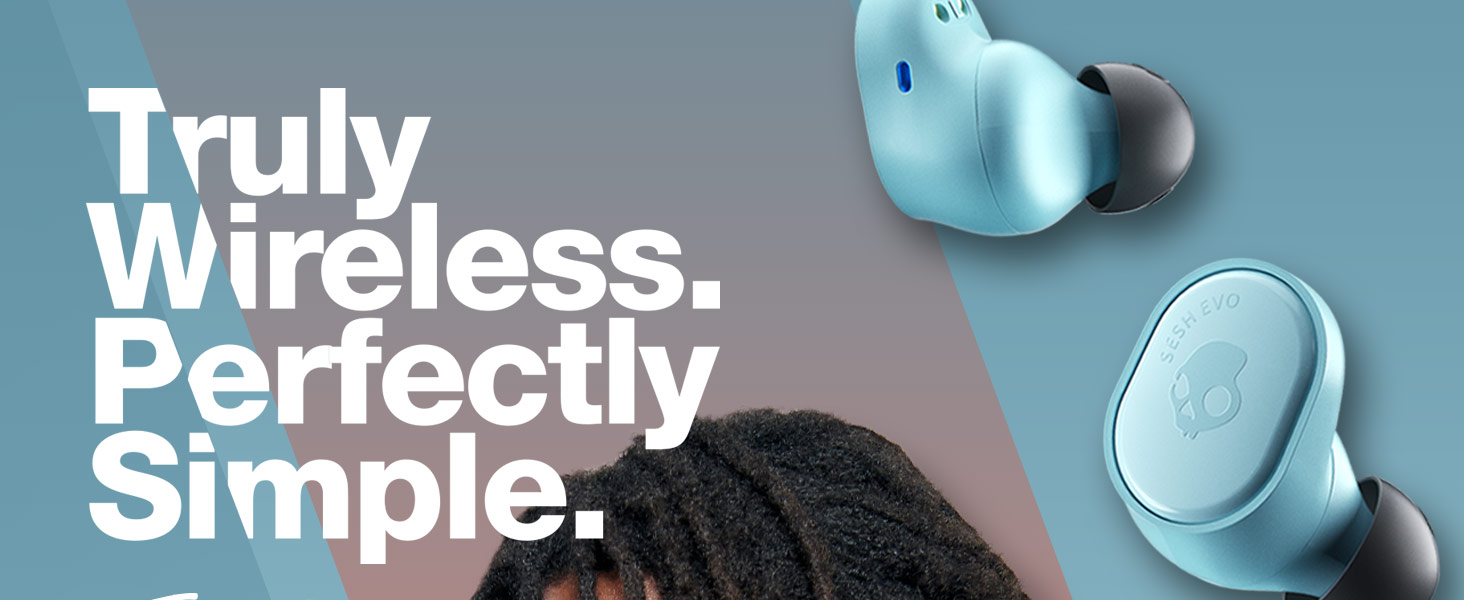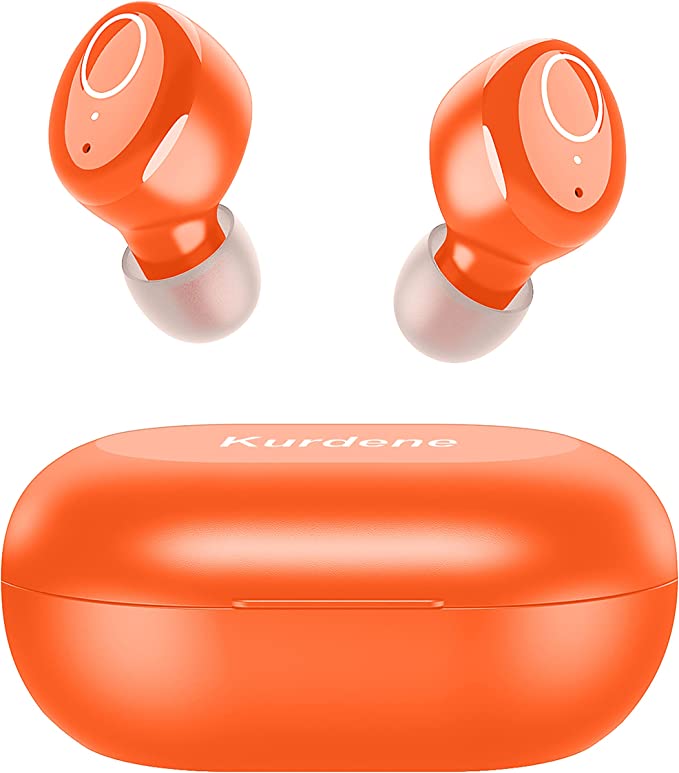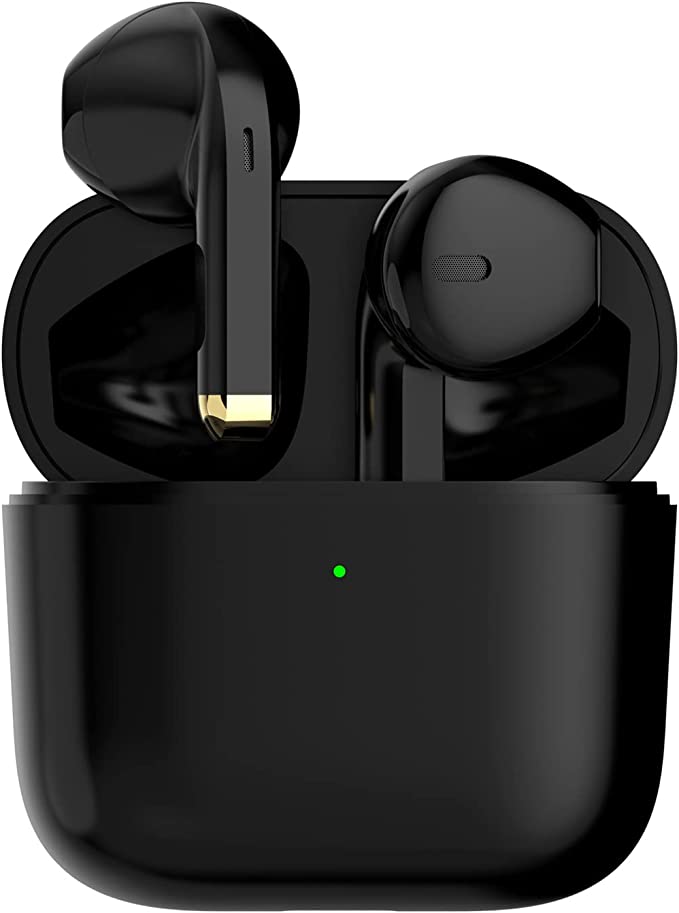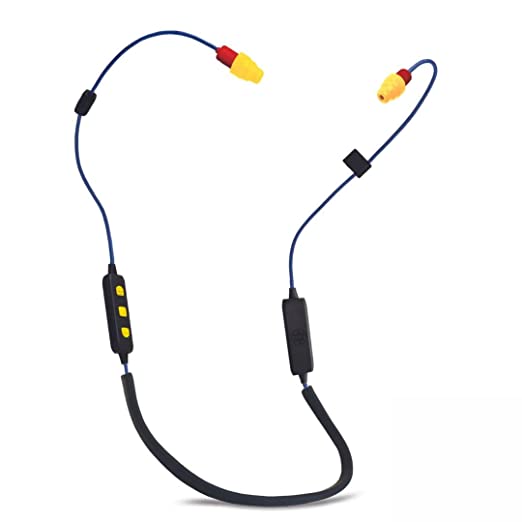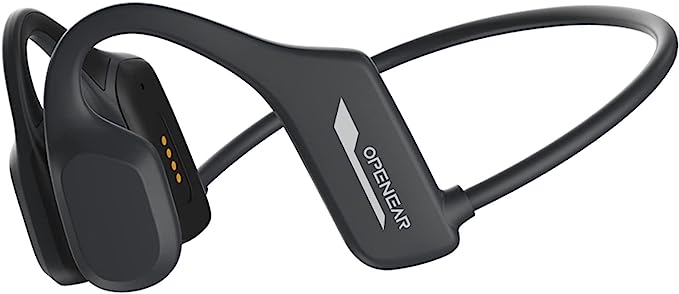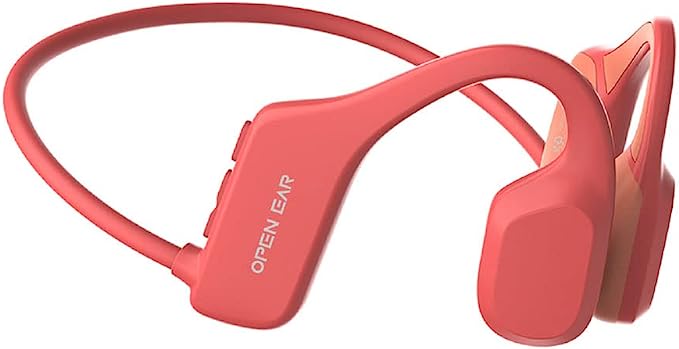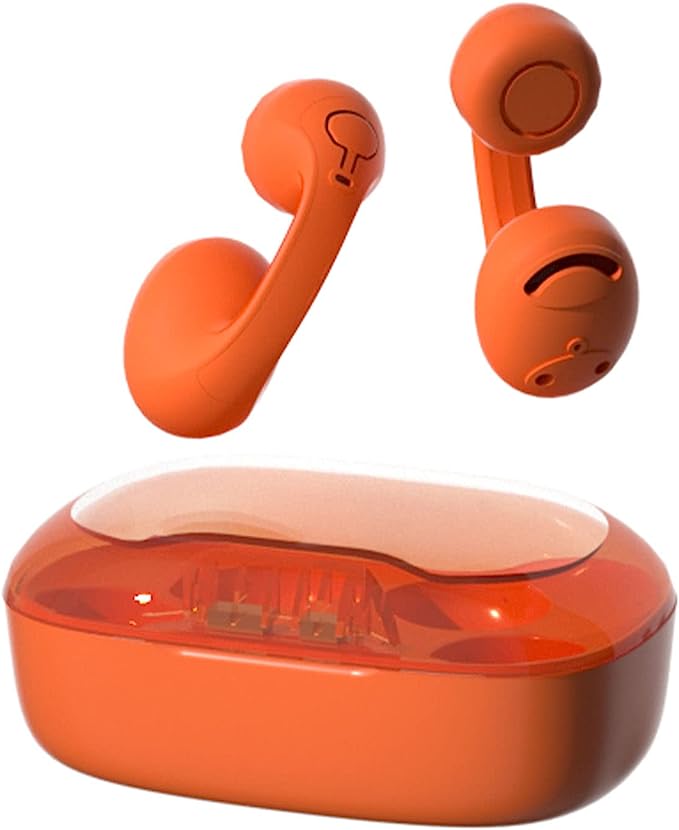AMAFACE V22 Open Ear Headphones: Stay Aware, Stay Active
Update on March 21, 2025, 9:28 a.m.
Imagine you’re jogging through a vibrant city park. Sunlight filters through the leaves, birds sing their morning melodies, and the gentle hum of the city provides a constant backdrop. You want to add your favorite motivational playlist to the mix, but you also want to remain aware of your surroundings – a cyclist approaching from behind, a friendly greeting from a fellow jogger, the distant siren of an emergency vehicle. Traditional earbuds would block out this crucial auditory landscape, creating a potentially dangerous disconnect. This is where open-ear headphones, like the AMAFACE V22, enter the scene, offering a harmonious blend of personal audio and environmental awareness.

The Science of Sound: A Quick Primer
Before we dive into the specifics of open-ear technology, let’s take a moment to appreciate the basics of sound. Sound is, fundamentally, a vibration. When an object vibrates – whether it’s a guitar string, a vocal cord, or the diaphragm of a speaker – it creates pressure waves in the surrounding medium, usually air. These waves travel outward, and when they reach our ears, they cause our eardrums to vibrate. This vibration is then translated into electrical signals that our brain interprets as sound. The frequency of the vibration (how many times it cycles per second) determines the pitch of the sound – high frequency equals high pitch, and low frequency equals low pitch. The amplitude of the vibration (how much the air pressure changes) determines the loudness.

Breaking the Seal: What is Open-Ear Listening?
Traditional headphones, whether they’re earbuds that seal off your ear canal or over-ear headphones that enclose your entire ear, work by creating a closed acoustic environment. This maximizes the sound pressure delivered directly to your eardrum, which can result in a powerful and immersive listening experience. However, it also significantly reduces your awareness of the sounds around you.
Open-ear headphones, on the other hand, take a different approach. They don’t block or seal your ear canal. Instead, they utilize air conduction to transmit sound. This means they generate sound waves that travel through the air to your ear canal, just like any other sound you hear naturally.
It’s crucial to distinguish air conduction from bone conduction. Bone conduction headphones, as the name suggests, transmit sound vibrations through the bones of your skull directly to your inner ear, bypassing the eardrum altogether. While both technologies allow you to hear external sounds, air conduction generally offers better sound quality and a more natural listening experience, as it utilizes the normal pathway of hearing.
The benefits of open-ear listening are threefold:
- Comfort: No pressure or discomfort from having something inserted in your ear canal.
- Safety: Maintain awareness of your surroundings, crucial for activities like running, cycling, or even walking in a busy city.
- Hygiene: Reduced risk of ear infections compared to in-ear headphones, as there’s no build-up of moisture and bacteria in the ear canal.
Meet the AMAFACE V22: Designed for Your Active Life
The AMAFACE V22 headphones embody the principles of open-ear listening in a sleek and practical design. These aren’t your typical earbuds. Instead of inserting them into your ear canal, you clip them gently onto the outer ear. This “ear-hook” or “clip-on” design provides a secure fit without any pressure inside the ear, making them exceptionally comfortable, even during extended wear. The lightweight build (a mere 3.2 ounces) further enhances comfort – you’ll likely forget you’re even wearing them. The design cleverly positions the small sound-producing components, the acoustic transducers to be precise, to direct sound into your ear canal without blocking it.
Bluetooth 5.3: The Unsung Hero of Wireless Audio
The AMAFACE V22 isn’t just about comfortable, open-ear listening; it’s also about a seamless wireless experience. This is where Bluetooth 5.3 technology comes into play. You might think of Bluetooth as just a way to connect your headphones to your phone, but it’s much more than that. It’s a constantly evolving standard that governs how wireless devices communicate, and version 5.3 brings some significant improvements.
Let’s compare it to its predecessors. Bluetooth 5.0, a widely used version, was a major step forward in terms of range and data transfer speed. Bluetooth 5.2 added LE Audio (Low Energy Audio), a new set of features designed to improve audio quality and reduce power consumption. Bluetooth 5.3 builds upon these advancements, focusing on enhancing connection reliability, reducing latency, and further improving power efficiency.
Here’s a breakdown of the key benefits:
- Enhanced Connection Stability: Bluetooth 5.3 utilizes intelligent connection management techniques. It’s better at filtering out interference from other wireless devices, resulting in fewer dropouts and a more stable connection, even in crowded environments.
- Reduced Latency: Latency is the delay between when an audio signal is sent from your device (like your phone) and when you actually hear it in your headphones. Bluetooth 5.3 significantly reduces this delay, making it ideal for activities like gaming and watching videos, where even a small lag can be disruptive.
- Improved Power Efficiency: Bluetooth 5.3 is designed to be more energy-efficient, meaning your headphones will last longer on a single charge. The AMAFACE V22, for instance, boasts up to 5 hours of playtime, with the charging case providing additional power for extended use. This improved efficiency is partly due to features like Connection Subrating, which allows devices to quickly switch between low-power and high-power modes as needed.
- Faster Connection: Improved and faster pairing.
Air Conduction Explained: How the AMAFACE V22 Delivers Sound
We’ve established that the AMAFACE V22 uses air conduction, but how does it actually work? The core principle is similar to how a traditional loudspeaker works, albeit on a much smaller scale. The headphones contain miniature acoustic transducers. These transducers convert electrical signals (from your phone, via Bluetooth) into mechanical vibrations. These vibrations then create pressure waves in the air – sound waves.
The clever design of the AMAFACE V22, specifically the positioning of the transducers near the ear canal, ensures that these sound waves are directed towards your ear. It’s like having tiny, precisely aimed speakers positioned just outside your ears. The shape and material of the housing also play a role in shaping the sound waves and minimizing sound leakage (the amount of sound that escapes and is heard by others). Some open-ear headphones utilize carefully designed acoustic ports or waveguides to further control the direction and quality of the sound.
Sound Quality Showdown: Open-Ear vs. In-Ear
It’s a common misconception that open-ear headphones inherently have inferior sound quality compared to in-ear headphones. While it’s true that in-ear headphones, by creating a sealed environment, can deliver a more powerful bass response and better noise isolation, open-ear headphones have made significant strides in sound quality.
The AMAFACE V22, for example, strives to deliver a clear and balanced sound profile. However, it’s important to acknowledge the inherent challenges of open-ear design. Because the ear canal isn’t sealed, some sound energy is inevitably lost to the environment. This can result in a slightly less intense bass response compared to some in-ear models. Additionally, open-ear headphones offer minimal noise isolation, meaning you’ll hear more of your surroundings. This is a deliberate design choice for safety, but it means they’re not ideal for noisy environments where you want to completely block out external sounds. The quality is often compared to having background music while still being able to carry a conversation.

Beyond the Workout: Where Open-Ear Headphones Shine
While open-ear headphones are often marketed towards athletes, their benefits extend far beyond the gym or running trail. Consider these scenarios:
- Commuting: Stay aware of traffic announcements, hear your stop called out, and be able to interact with fellow passengers without removing your headphones.
- Office Work: Listen to music or podcasts without isolating yourself from colleagues. You can easily participate in conversations without constantly taking your headphones off.
- Driving: While it’s crucial to prioritize safe driving practices, open-ear headphones can allow you to listen to navigation instructions or take hands-free calls while still hearing important sounds like sirens or horns. (Always check local laws regarding headphone use while driving.)
- Home: Enjoying podcasts or background music while still be aware of the doorbell, phone or children.
The key advantage in all these situations is situational awareness. Open-ear headphones allow you to enjoy your audio content without sacrificing your connection to the world around you.
A Brief History of Hearing
The quest to enhance and assist hearing is an old one. Early hearing aids were essentially horns or trumpets, designed to collect and amplify sound waves. The invention of the electric microphone and amplifier in the late 19th and early 20th centuries revolutionized hearing aid technology, leading to smaller, more powerful devices. The development of the transistor in the mid-20th century further miniaturized hearing aids, paving the way for in-ear and behind-the-ear models.
Headphones, initially used for communication purposes (telephone operators, radio operators), gradually evolved into devices for personal audio entertainment. The first headphones were bulky and uncomfortable, but advancements in materials and technology led to the development of lighter, more comfortable designs, including the earbuds and in-ear monitors that are ubiquitous today. The open-ear headphone represents the next stage in this evolution, prioritizing not just audio quality, but also comfort, safety, and awareness of the surrounding environment.
Comparing Open-Ear Headphones: AMAFACE V22 vs. the Competition
While the AMAFACE V22 offers a compelling combination of features and value, it’s helpful to understand how it stacks up against other open-ear headphones in the market. Two prominent categories of open-ear headphones are air conduction and bone conduction.
-
Bone Conduction (e.g., Shokz): Shokz (formerly AfterShokz) is arguably the best-known brand in the bone conduction space. Their headphones rest on the cheekbones, transmitting sound vibrations directly to the inner ear through the skull. The main advantage of bone conduction is that it leaves the ear canal completely open, maximizing situational awareness. However, some users find the vibrations ticklish or uncomfortable, and the sound quality, particularly in the bass frequencies, is often perceived as less rich and full compared to air conduction.
-
Air Conduction (e.g., Bose Frames, Sony LinkBuds): Bose Frames are audio sunglasses that use small speakers embedded in the temples to direct sound towards the ears. Sony LinkBuds feature a unique ring-shaped driver with a hole in the center, allowing external sounds to pass through. These designs, like the AMAFACE V22, use air conduction. They generally offer better sound quality than bone conduction, but the level of situational awareness can vary depending on the specific design. Bose Frames, for instance, are more directional and provide less awareness than LinkBuds or the AMAFACE V22.
Compared to these options, the AMAFACE V22 distinguishes itself through its combination of:
- Secure Clip-On Design: Ensures a stable fit during physical activity, unlike some open-ear designs that rely on a looser fit.
- Bluetooth 5.3: Offers the latest advancements in wireless connectivity, potentially exceeding the performance of some competitors that use older Bluetooth versions.
- Value for Money: The AMAFACE V22 is positioned at a competitive price point, making open-ear technology accessible to a wider range of users.
The Future of Open-Ear
Open-ear headphone technology is still relatively young, and there’s significant potential for future innovation. We can expect to see:
- Improved Sound Quality: Further refinements in transducer design and acoustic engineering will likely lead to even better sound quality, particularly in the bass frequencies.
- Miniaturization: Open-ear headphones will likely become even smaller and lighter, further enhancing comfort.
- Smart Features: Integration with voice assistants, health tracking sensors (heart rate, body temperature), and even augmented reality applications is on the horizon. Imagine open-ear headphones that can provide real-time translation or overlay audio information onto your surroundings.
- Hybrid Designs: We might see headphones that combine air conduction and bone conduction, leveraging the strengths of both technologies.
- Adaptive Sound Control: Headphones could use sophisticated algorithms to analyze the surrounding sound environment and adjust the audio output accordingly, ensuring optimal clarity and awareness.

Conclusion: Embrace the Open Sound Experience
The AMAFACE V22 open-ear headphones represent a significant step forward in personal audio technology. They offer a compelling alternative to traditional earbuds and headphones, prioritizing comfort, safety, and situational awareness without sacrificing audio quality. By embracing the principles of air conduction and leveraging the advancements of Bluetooth 5.3, the AMAFACE V22 allows you to enjoy your favorite music, podcasts, and audiobooks while remaining fully connected to the world around you. They provide a way of enhancing, not isolating, the sounds of life. Whether you’re a dedicated athlete, a busy commuter, or simply someone who values both audio enjoyment and environmental awareness, open-ear headphones offer a unique and compelling listening experience.
